September 25-26, 2025. Siracusa to Catania
Sometimes there are special experiences when traveling, unexpected and touching a strong emotion within. Today was one such moment for me when I explored by myself the Siracusa Necropolis Archeological Museum and Park. For some unfathomable reason, this was not included on our tour and was not even recommended by our tour leader but it was one of the best archeological parks I have visited with both the remains of a large Greek amphitheater with ancient grottos above and, completely separately and apart, a complete Roman amphitheater built in later times.
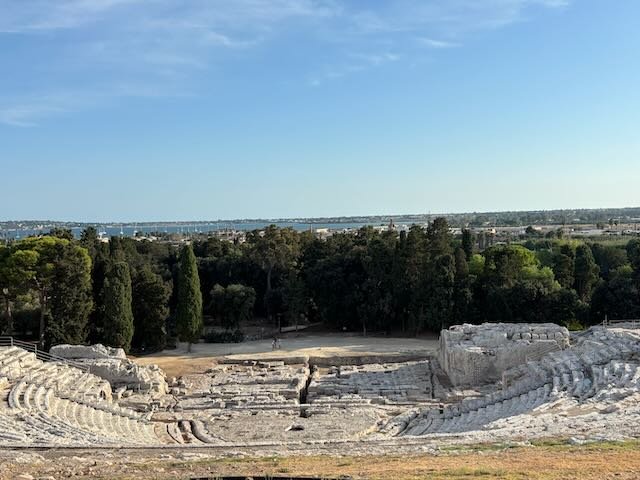
My first stop was a walk to the museum, a large well presented modern building which housed an extensive collection of the local finds, many small ceramic figurines and larger marble sculptures from the Greek Hellenic period 4th-1st Century BC after which the Romans took over until the dissolution of the empire in about 486 AD. The emotional value, moving through the remains of this period, is the sense of the value of time, how fleeting our culture and experiences right now are, how we are such a small piece of the whole and how important it is to remember this short transit of our beings. It is easier to feel the full weight of impermanence when surrounded by the remains of other times. This museum was exceptional for many reasons but one of them was that there were no guards and almost nobody there. Extraordinary marble statues could easily be touched if one wished although I assume there were cameras watching somewhere around the 3 floor of exhibits.
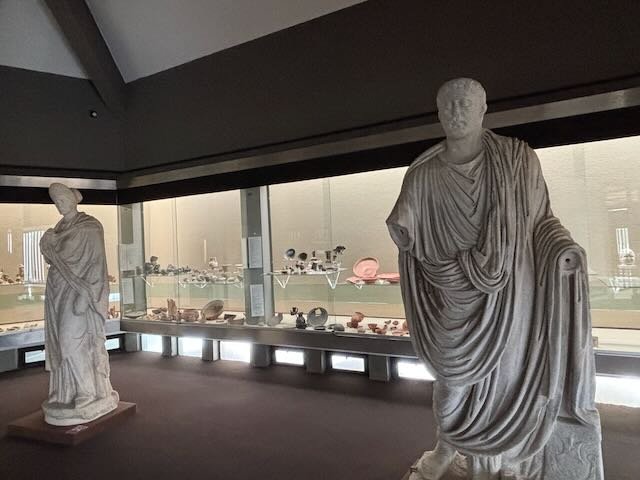
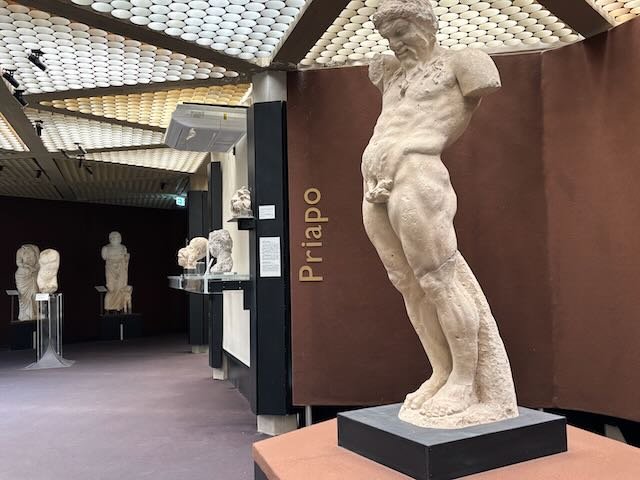
Visiting this museum, made me emotionally ready to enter the large archeological park and the Roman theater which in addition to ancient remains is the site of a very strong exhibit of the Polish sculptor Igor Mitoraj, whose beautiful bronze and metal partially disintegrated sculptures we first saw at the Valley of the Temples outside Agrigento. His fallen Icarus in the middle of the amphitheater is a testament to all of history as written on a signpost.
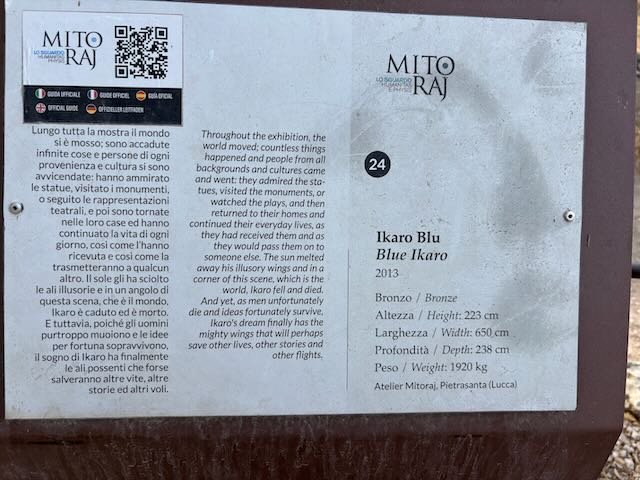
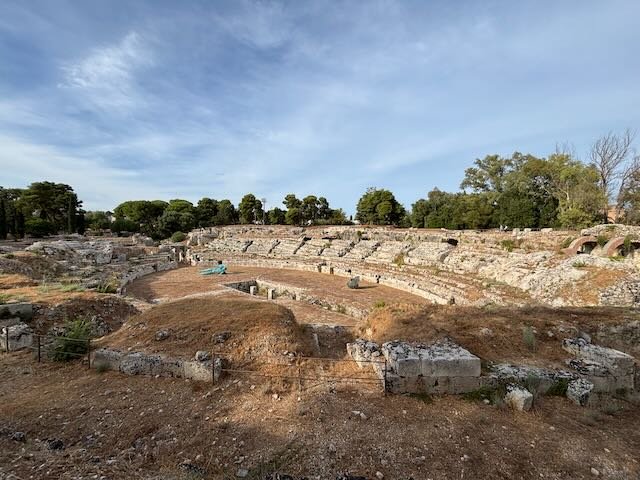
I didn’t have the benefit of a guide but I did overhear another group’s English tour leader discuss the differences over times of the experience of gladiators under the Romans: first for fame and glory, and then for punishment, and then for commercial purposes.
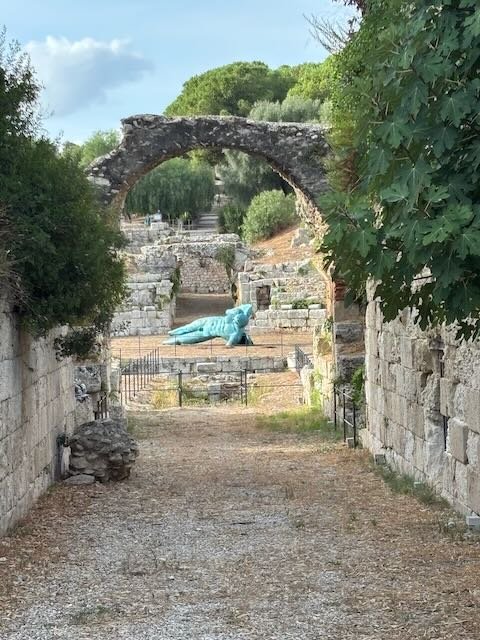
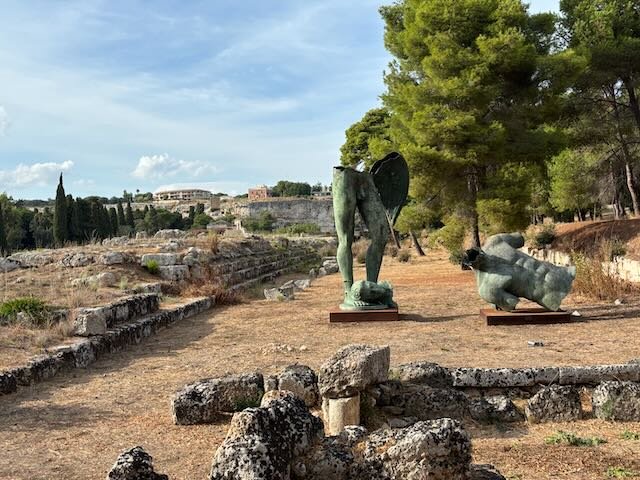
I thought that was all there was — and then discovered the signs to the Greek Amphitheatre, beautifully laid out on the hillside with the sea in the distance. This was such a rich ancient place, with ample water and rich lands so that it is understandable how various people wished to occupy it.
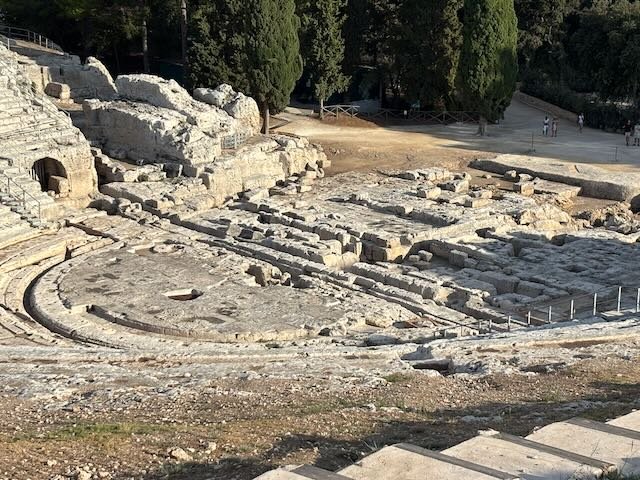
Earlier in the day the group went to visit the connected island of Ortygia, with itself a long history and the remains of a Greek temple. Today, a bustling port with beautiful old buildings and a large cathedral in a piazza and a very active fish and vegetable market. One other group member and I were taken at our request to a laundromat where we dropped off our clothes and then returned 2 hours later to find them clean and folded – for the very reasonable rate of 10 Euros. The cathedral in Ortygia was spare and beautiful with dark morbid paintings as is common in some Italian Catholic Churches.
I was at the archaeological park, immersing myself in the stone remains of 2000 years ago, looking over a calm sea, until it closes and I walk back to my hotel. On the way back, I run into a student demonstration with a blocked off street. Loud music and chanting. But when I showed the photo to our guide, he had no idea what the image or protest was about — they are so common here. Dinner with some members of the group at a nearby seaside restaurant. I am finally feeling recovered from my flu and getting good sleep.
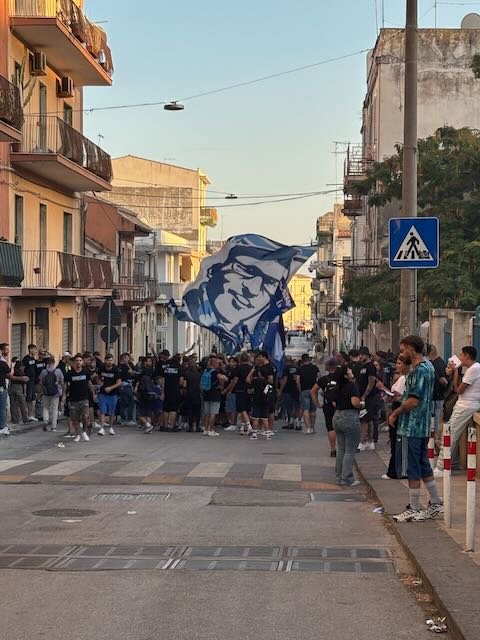
Etna, Taormina and Catania
Our next to last full day is spent on the hillside of the great active Mt Etna volcano which has provided the basis of the rich soil we find in the area. There have been periodic slow flows, not, we are told, upward eruptions, but still enough to destroy whole pine forests and recently some ski lifts and structures. The last major one was in only 2002 and we traveled by 4-wheel jeep to see its very edge which was slowed if not stopped by helicopters dropping water. While most of the group went on to hike up a cloudy hillside, I was concerned about the description of a sharp slippery descent and stayed behind with 2 others to be taken on a jeep ride around the lava flows and then to the rebuilt ski area on top of the hardened basalt and pumice.
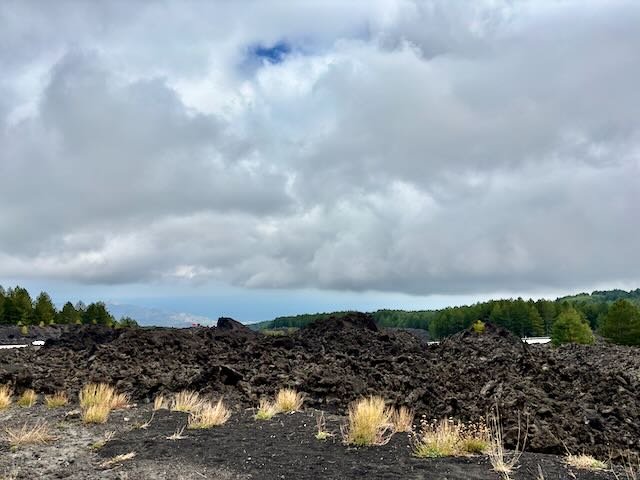
A group lunch at a winery, making good use of the special soil, with great plates of appetizers and a 4-wine tasting menu which I was happy to watch others enjoying.
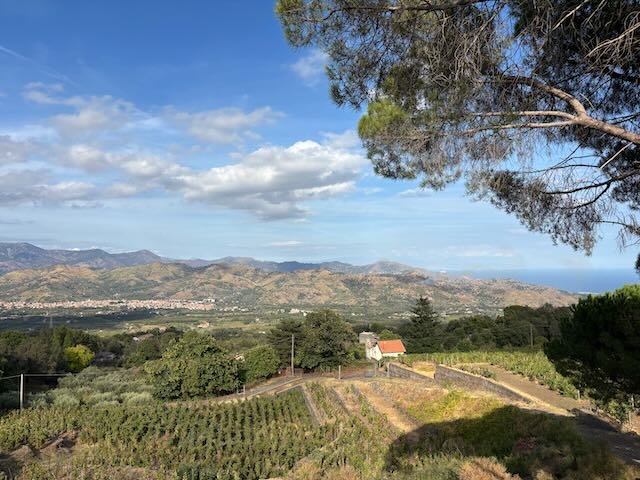
We finally arrived in Catania which is a true historic city in every sense of that term. It is a large urban area with old apartments and dwellings, converted villas, municipal offices, monasteries, school structures, including a major university, many churches and large piazzas with ornamental foundations and sculptures in their center – and a lot of traffic. These are all juxtaposed on the base of evolving historical change: everywhere you turn there is unexpectedly an excavated site one or two levels down, a rotunda, a cluster of houses, the remains of a church. Each period of time placing its imprint on the environment, including the most recent, layers of graffiti on every wall and door. I wonder what the archeologists in 2000 years will think of the red, white, yellow words spray painted on top of baroque decorations.
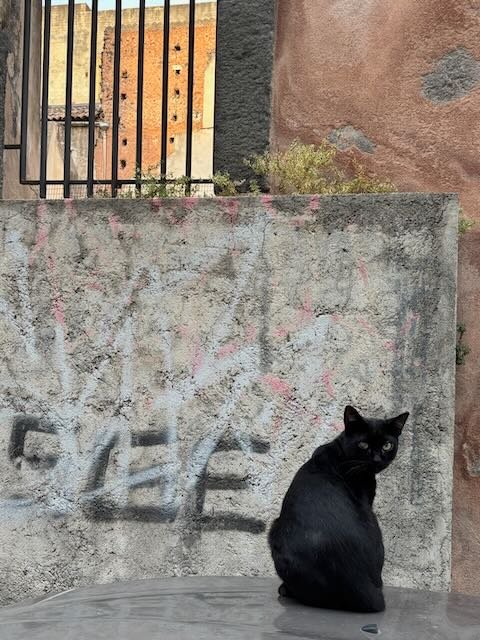
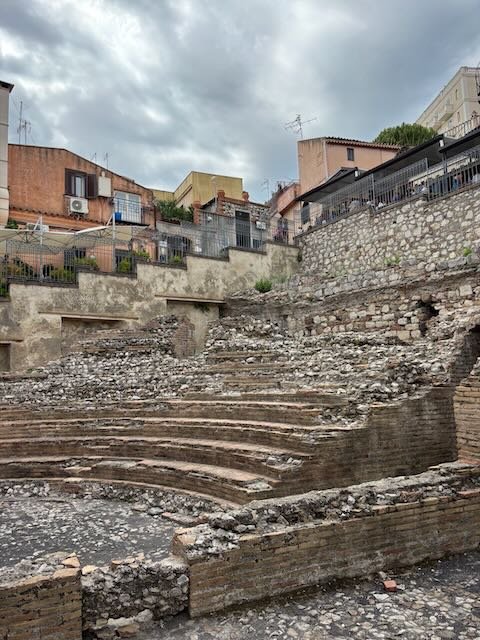
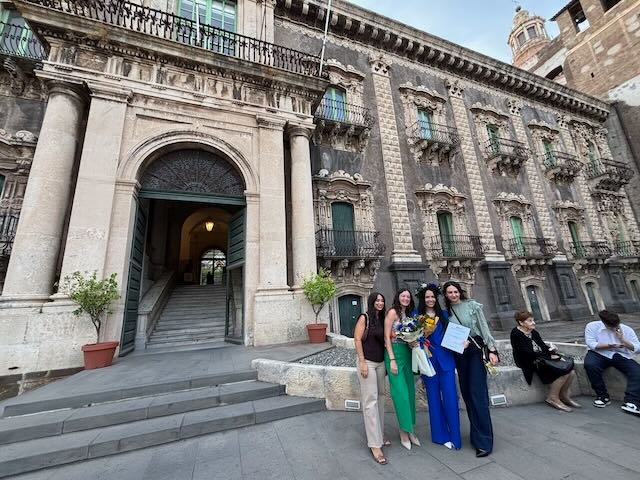
Taormina
We spend our last day visiting incredible picturesque and justifiably heavily visited Taormina, a hillside town above Catania. Old cobbled streets with the highest end clothing shops amid food specialty places and take home souvenirs.
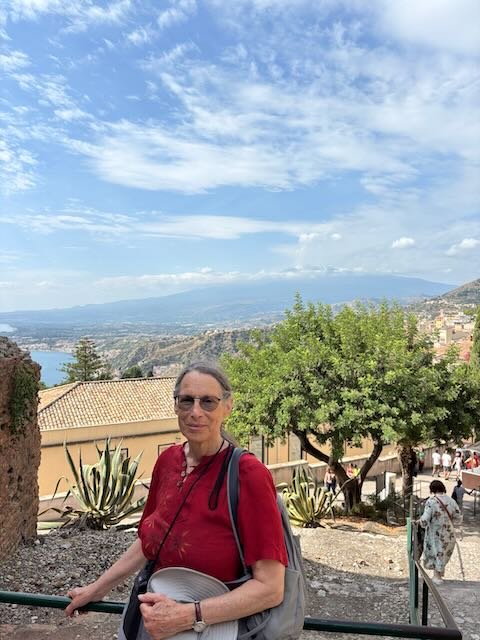
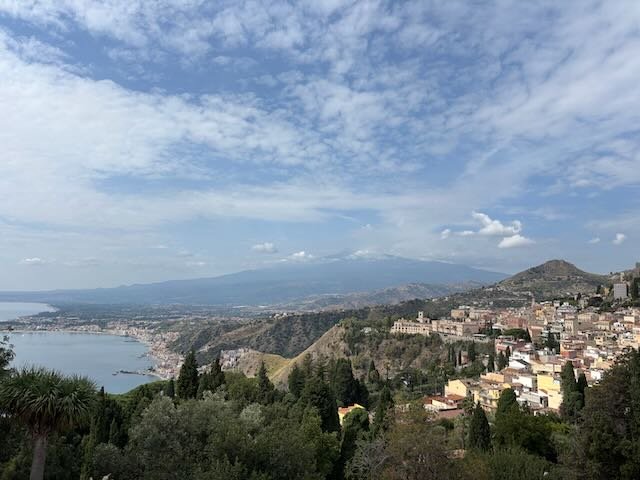
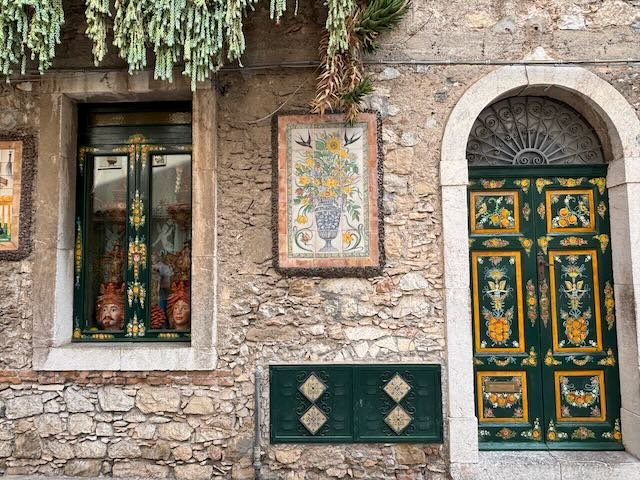
The highpoint of the town is its intact Greek/Roman theatre, still used today. Our excellent local guide tells us that she was there for an Andre Bocelli sold out concert. She also describes to us how the town was recycled over the ages, with the Greek large stone blocks reused by later generations, combined with the remains of the bricks used by the Romans for building and their brilliant invention of concrete. So that medieval buildings are easily recogized by their composite mixture of stones, bricks, and concrete, rising from their earlier manifestations. She also mentioned how all the old families here have old Greek or Roman antiquities hidden somewhere in their homes, found in some family excavacations. You can’t dig anywhere here without turning up something very old.
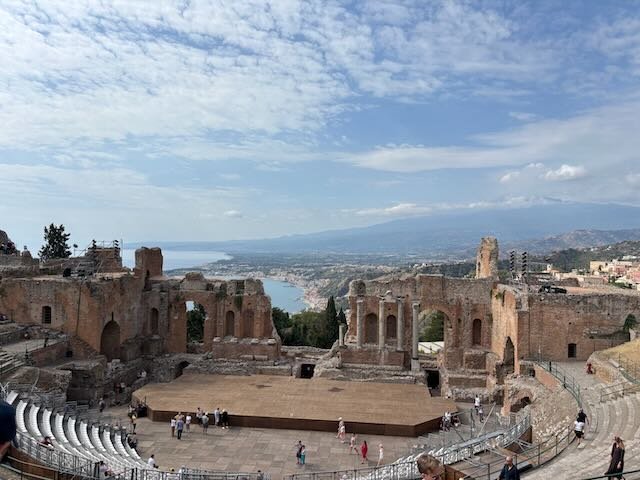
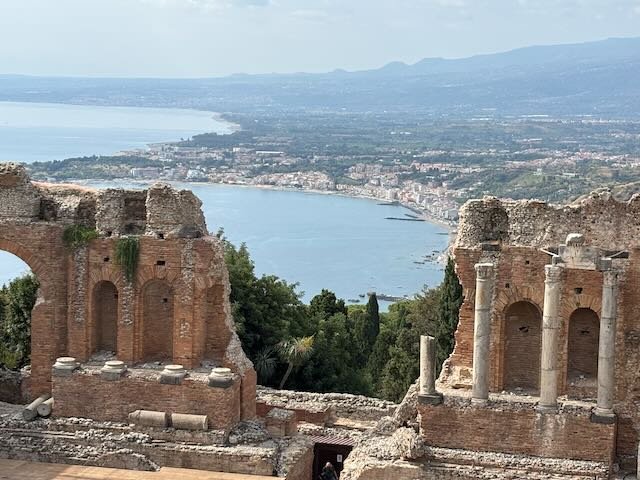
Incredible pastries and ice creams are everywhere, a main tourist commodity but developed and beloved by the local population as well. I try to limit myself to one vegan gelato/granita a day but it is difficult. One day I have a double chocolate cup, one side is traditional non-dairy chocolate and the other is pure chocolate from Modica, which we had visited, topped with some kind of crunchy chocolate sprinkles. This was so good I encourage my tour mate Peter whom I ran into to try one — and then when he got his cup, I couldn’t resist a second one with mango and chocolate. I try to justify this because I always get the “piccolo” or small size and it is only about $3.50.
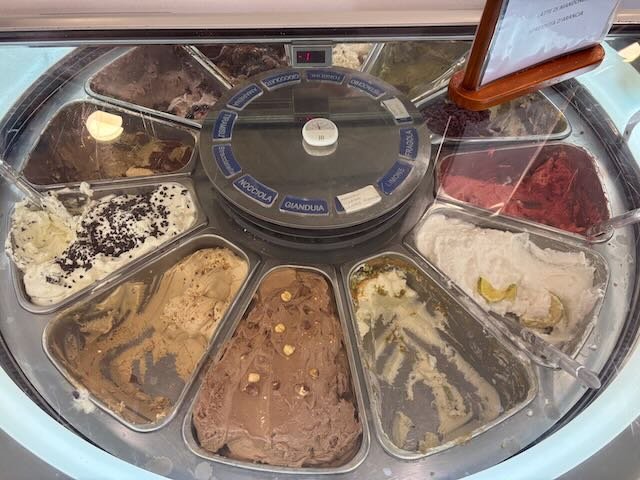
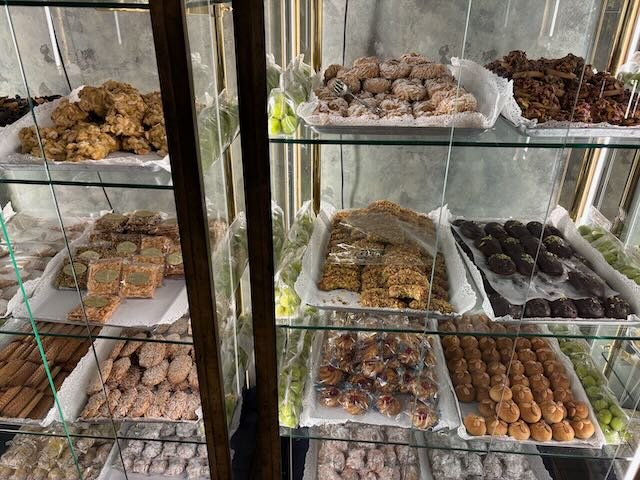
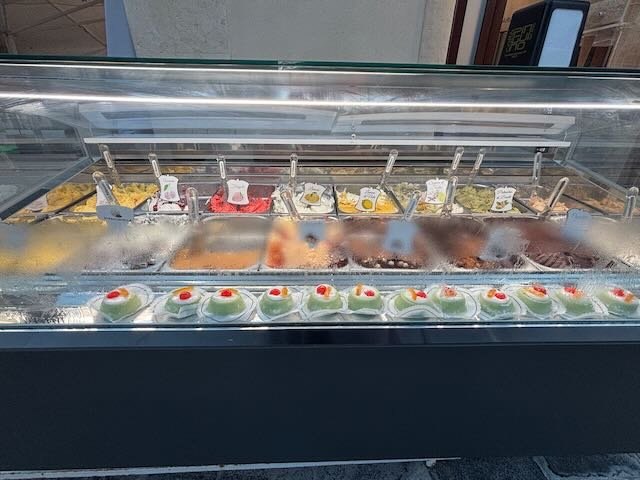
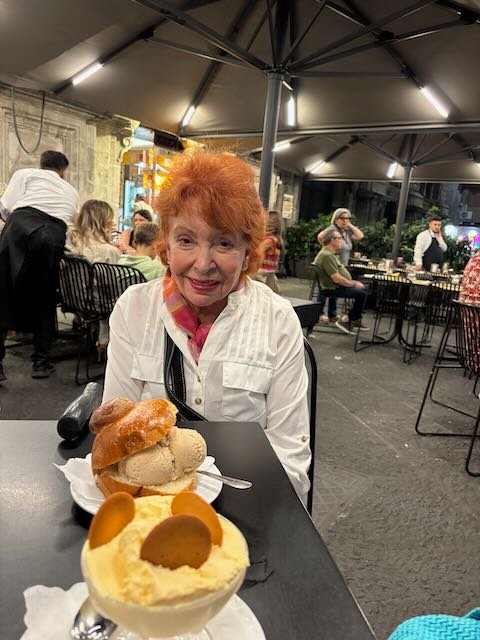
in front of another option, all good.
Our hotel in Catania is near the main Duomo or cathedral square around which are restaurants and gelateria to cater to the tourists. A musician plays on an electrified violin, some good classical music, Italian, of course, in the center near the fountain. On Friday night, the piazza nearby with a large University building seems to be hosting a fair of its offerings, with many white tents and throngs of young people. After our final dinner together, I go out by myself for one final treat: a chocolate and mulberry granita, not found anywhere else in the world that I know of.
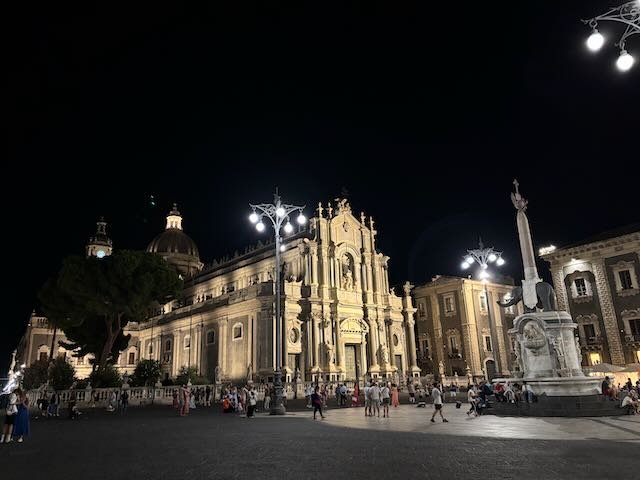
Goodby to Sicilia! Arrivedechi!
